Ten ways ‘Proxima b’ is different than Earth
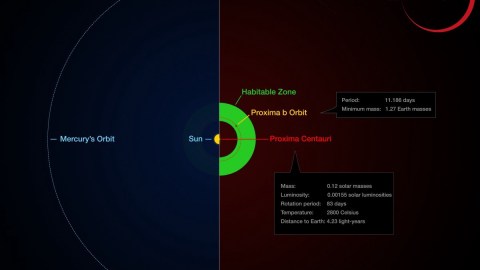
Because “Earth-like” doesn’t necessarily mean “like our Earth.”
“I have lost tolerance for things without meaning. There is no time for them. Does that make sense?” –Sara Seager
At the end of August, a scientific team from the European Southern Observatory announced the discovery of Proxima b, the first exoplanet ever discovered around Proxima Centauri, the closest star in the Universe to our Sun. Discovered by the radial velocity method, where we can detect the tiny back-and-forth motions induced in the star thanks to the planet’s gravitational pull, we’ve been able to determine both the mass and the orbital period of this planet. Not only is it at the right distance from its star to potentially support liquid water on its surface, but it also has an estimated mass of 1.3 times our own world. If all this is true, it means that it’s only about 10% larger in diameter than our world, that it might have an Earth-like atmosphere, the same raw ingredients and elements as our world, and most excitingly, perhaps even life on the surface.
But despite these incredible similarities and its relatively close distance at just 4.24 light years away, there are some fundamental differences between Proxima b, the closest planet known outside of the Solar System, and our own Earth.
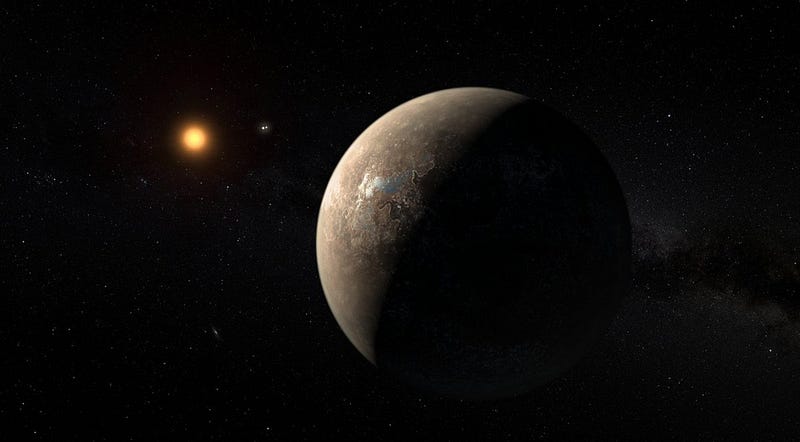
1) There’s no such thing as a day on Proxima b. Proxima Centauri is a red dwarf star, much smaller, less massive and dimmer than our Sun. Because of that, planets need to be much closer to their star in order to receive warmth, and that means much larger tidal forces. In the case of Proxima b, those forces are large enough to “lock” the planet to the star, meaning the same hemisphere always faces towards its sun, and the other hemisphere always faces away.
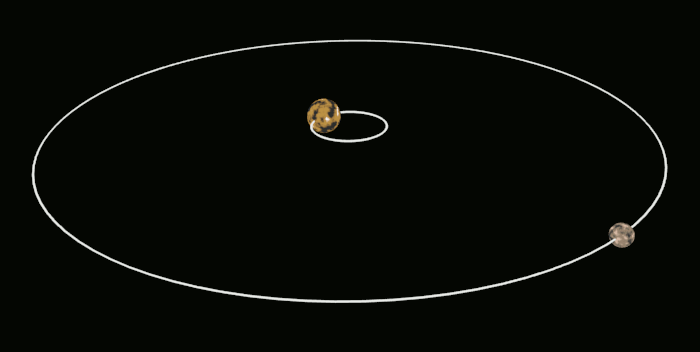
2) A year is just 11 days long. Because of its close-in orbit, Proxima b completes a revolution around its sun in just 11 days. But there’s no axial tilt because of the locking, meaning that seasons are determined by how elliptical the orbit is. If the orbit turns out to be perfectly or almost perfectly circular, there likely won’t be any seasons at all.
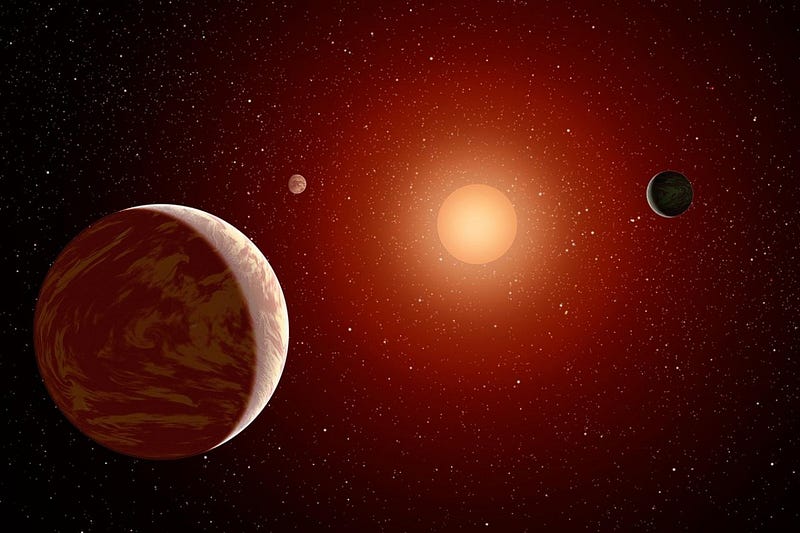
3) There will be three different climate zones. The side always facing its star will be consistently sun-baked, receiving scorching, direct sunlight without ever getting a break from it. Similarly, the side facing away from the star will experience eternal night, and should be dark and frozen, but with spectacular views of the Universe. The border between the night and day sides — a “ring” around the planet — will experience an eternal dawn/sunset, with perhaps the most Earth-like conditions.

4) Solar flares may be deadly to Proxima b’s day side. Red dwarf stars like Proxima Centauri are much more active and variable than stars like our Sun, and flare very frequently. These ejecta could prove deadly and cancerous to any organic lifeforms on the planets surface. While our magnetic field on Earth shields us from most of this, Proxima b is less likely to have one due to its lack of rotation.
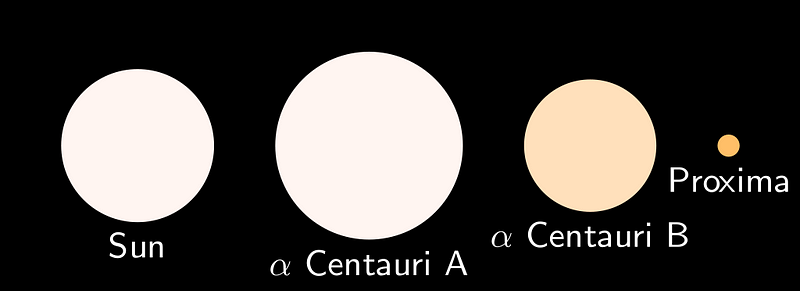
5) Plants on the surface couldn’t use UV light. Even though Proxima b is much closer to its star than Earth is to the Sun, Proxima Centauri is so much cooler and dimmer that there’s practically no ultraviolet light emitted from it. In fact, there’s practically no blue light, either, meaning that many of the same molecules that plants use to get energy on Earth wouldn’t work on Proxima b. Life would have to find another way.
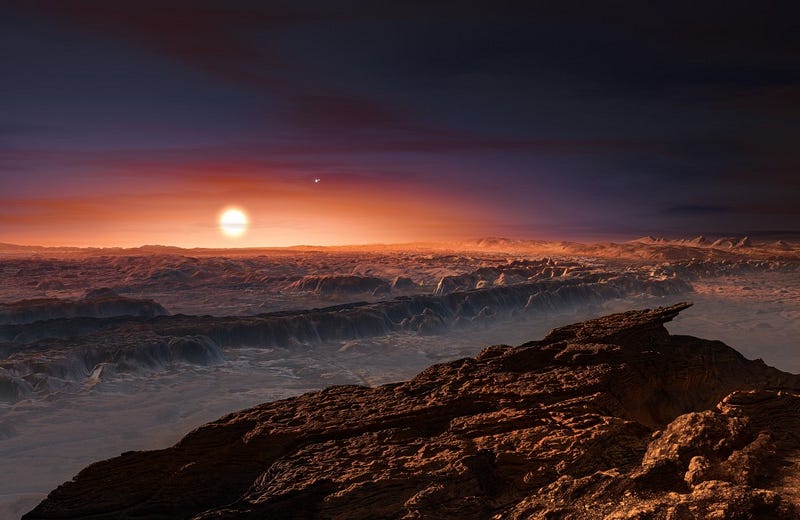
6) Winds wouldn’t encircle the world, but would drift from the light side to the dark side. On Earth, with our rotation, our climate zones and a changing energy gradient — where we absorb more energy during the day and radiate more during the night — leads to our winds flowing longitudinally across our planet. But on a locked world like Proxima b, the way energy/diffusion works means that winds would flow from the hot side to the cold side instead. To someone living in the “ring” zone that was most Earth-like, it would feel like the sun itself was the source of the wind. In an indirect sense, it actually is.
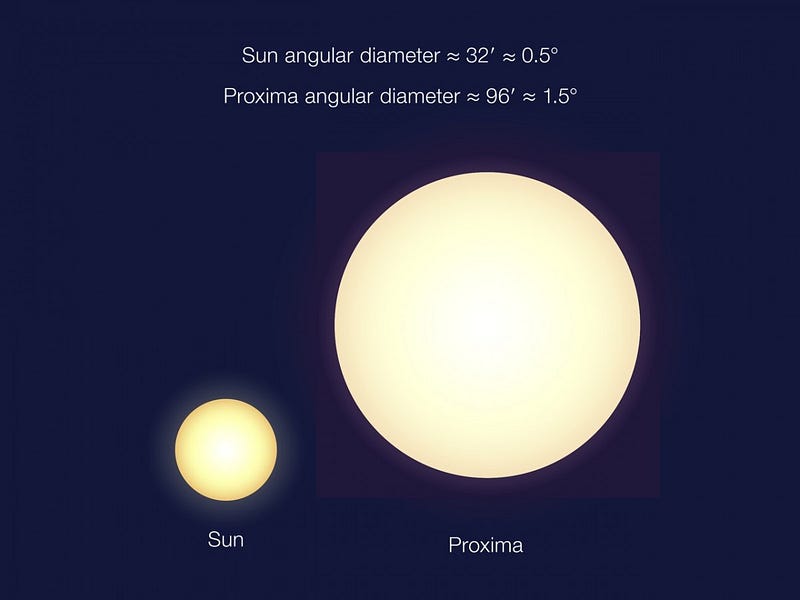
7) Their Sun would appear huge in the sky. Proxima Centauri is a lot smaller than the Sun is by a lot of metrics: it’s only 12% the Sun’s mass, 14% the Sun’s radius and gives off only 0.17% of the Sun’s energy and 0.005% of the amount of visible light that our Sun does. But because of how close Proxima b is to its star, it will still appear ten times larger (in area) than our Sun does to us. Most of the energy is in the infrared, so if you closed your eyes and basked in the warmth, it would feel almost (70%) as warm as the Sun, plus you wouldn’t be in danger of a sunburn without UV light to contend with.

8) There would be two stars brighter than anything Earth sees on their night side. While Proxima Centauri is the closest star to our Sun at 4.24 light years away, Alpha Centauri A and Alpha Centauri B, barely resolvable as separate stars by professional telescopes, would be easily distinct and incredibly bright to the naked eye from Proxima b. At a distance of just 0.21 light years, they would have a brightness of -6.8 and -5.2 magnitudes, respectively, meaning they’re 140 and 30 times brighter than Sirius, the brightest star in our night sky. They would appear separated by about 0.3 degrees from one another on the sky, or about half the diameter of the full Moon.
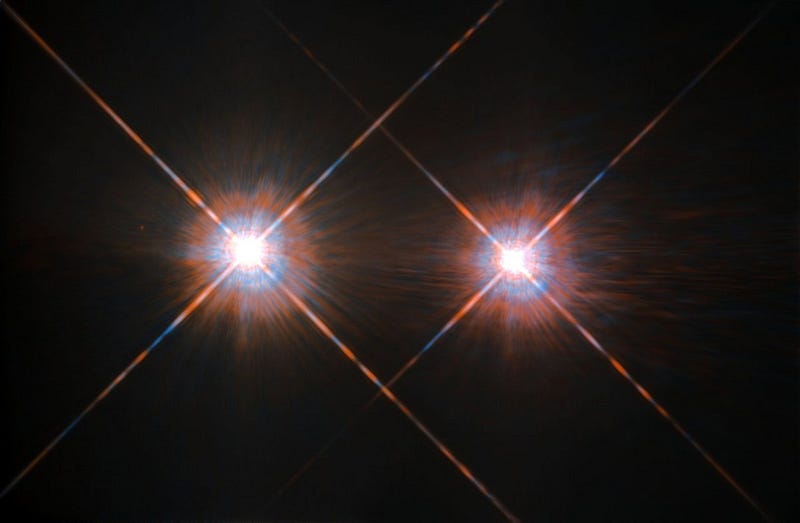
9) All the stars would appear incredibly blue to someone who evolved on Proxima b. Because the temperature of Proxima Centauri is so cool compared to our Sun — 3,000 K instead of 5,700 K — any life that evolved there would evolve to “see” those longer, redder wavelengths. Because the vast majority of bright stars, including Alpha Centauri A and B and our Sun, are hotter and emit so much more blue light than Proxima Centauri does, the night sky would provide a deluge of blue light. In our sky, by contrast, most stars appear white, at nearly the same color-temperatures as our Sun.
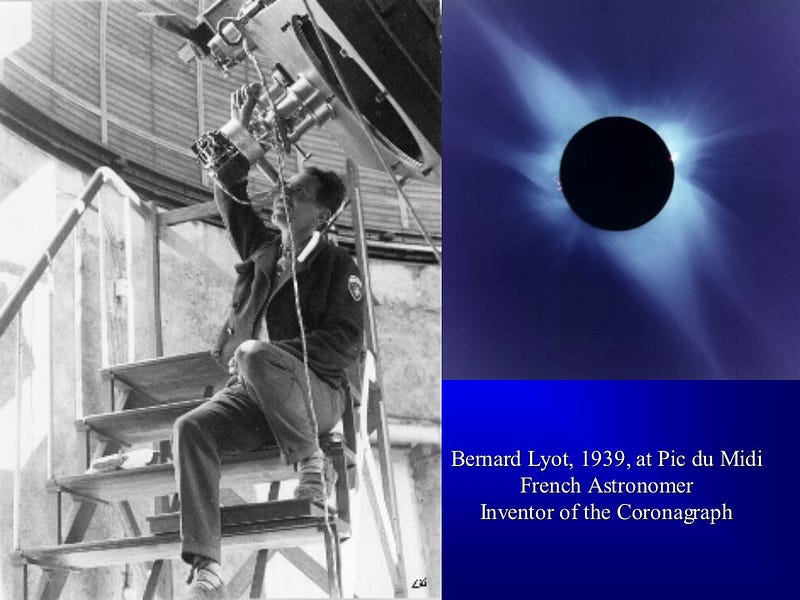
10) And they would have begun detecting exoplanets with technology almost 100 years old. While it wasn’t until the early 1990s that we detected our first exoplanets, it’s quite probable that someone living on Proxima b would be able to directly image any bright worlds near Alpha Centauri A or B as soon as a large telescope with a stellar coronagraph was developed. On Earth, Bernard Lyot invented the coronagraph in 1939 to view stars and the corona during the day without the need for a solar eclipse. If the light from Alpha Centauri A and B were blocked with a stellar coronagraph, direct imaging of any planets that were present there would be easily accomplished with 1917-level telescope technology. From our much greater distance on Earth, direct imaging of worlds around any of the “Centauris” is still impossible, even with Hubble. With today’s technology, an inhabitant of Proxima b would need to observe our Sun for over a decade to detect Jupiter, our most easily found “exoplanet.”
This post first appeared at Forbes, and is brought to you ad-free by our Patreon supporters. Comment on our forum, & buy our first book: Beyond The Galaxy!





